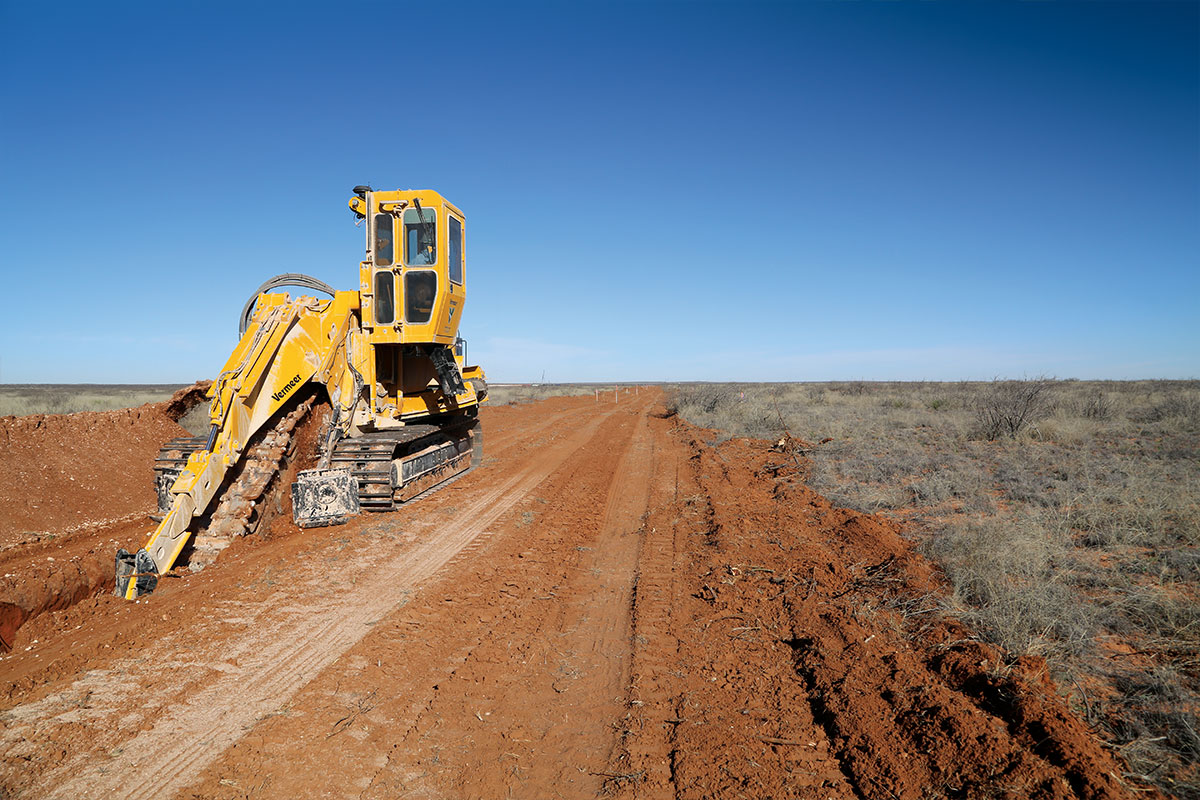Choosing the right horizontal directional drill (HDD) is critical to help maximise your team’s performance on large-diameter bores over long distances. You need to make sure you’re choosing a drill rig that has the proper torque for the ground conditions and thrust/pullback power to handle the weight of the pipe being installed. You should also consider choosing a drill that will deliver the most efficient results — from transport and setup to project completion — job after job.
PROJECT CONSIDERATIONS
According to Tod Michael, product manager for trenchless products at Vermeer Corporation, choosing the right drill for large-diameter bores starts with having a good understanding of the bore requirements, such as the bore plan, ground conditions, jobsite space and details about the product being installed. “On many of these projects, a contractor can likely complete the job using several different drill models, but their goal should be doing it as efficiently and cost-effectively as possible,” explained Michael. “Details in the bore plan, like the shape of the bore and the product being installed, will help provide a lot of details about bend allowances on the job. Drills with a smaller footprint provide more flexibility when space is limited. However, using a larger-sized drill with a longer drill pipe on long bores can help reduce the number of connects that need to be made and broken, which can have a substantial impact on how long a project will take.”
Michael also said contractors should consider the size of the machine, ease of transport and setup speed of the pilot bore versus the overall productivity and costs to operate. It may make sense to choose a slightly smaller drill and take a little longer to complete a bore to help reduce overall project costs.
“Drills like the Vermeer D60x90 and the Vermeer D100x140 S3 are good intermediate options for smaller pipeline, water and electrical transmission line projects,” explained Michael. “These machines are equipped with auto-loading rod racks that help minimise the time it takes to add and remove rods to the drill string,” he explained. “Also, if crews can get by with using drillhead guidance systems instead of wire lines and steering tools, they can help reduce cycle times and limit the number of people needed to complete the bore.”
STEPPING IT UP
While large utility drills can be efficient on many intermediate projects, pilot bores at longer distances and in challenging ground conditions require larger-diameter drill pipe to deliver higher volumes of drilling fluid. Larger pipe requires greater torque to make and break connections, which means stepping up to a larger drill. “A drill can push the drill stem only so far through the ground before the distance gets to be too much for delivering enough gallons per minute of fluid and rotational torque,” explained Michael. “At that point, it’s time to step up to a drill that can muscle larger-diameter drill pipe so more fluid can be pushed through the drill stem to the drill head.”
Michael also said that drill pipe diameter and torque go hand in hand. “While torque is important for spinning the drill stem and downhole tooling in the bore hole, having sufficient torque is just as important for making connections. Drill pipe is a significant investment for contractors, and when the connections aren’t properly torqued, threads can get wrecked, and that can put projects in jeopardy.”
THRUST/PULLBACK
Looking at any drill spec chart, thrust and pullback are among the first numbers you likely look to for determining a drill’s capabilities. Those two numbers are significant, but going bigger may not always be required. “Torque, drill pipe diameter and flow have an impact on how efficiently a drill will perform on the pilot bore,” said Michael. “Also, on many pipeline jobs, contractors will employ other machinery to help pull back the product being installed, so the drill doesn’t have to handle the weight of the product on its own. To help optimise the entry angle, crews will often hoist casings up with excavators and employ a pipe pushing machine to help get the product moving.”
Where pullback capacity does become important is when there are concerns about what’s happening in the hole. “For a lot of crews, knowing that they have extra power available if everything doesn’t go exactly as planned is important,” said Michael. “When the drill string slows or stops moving during pullback, a little extra pullback force may be just what they need to get a job back on track.”
There are a lot of factors to consider when choosing the best HDD option for large-diameter projects. If you need help determining which drill you should use on your next project, or whether it’s time to add another model to your current fleet, contact your local Vermeer Australia team on 1300 VERMEER or at www.vermeeraustralia.com.au.
Original article written by Vermeer Corporation

 MyDealer:
MyDealer:


